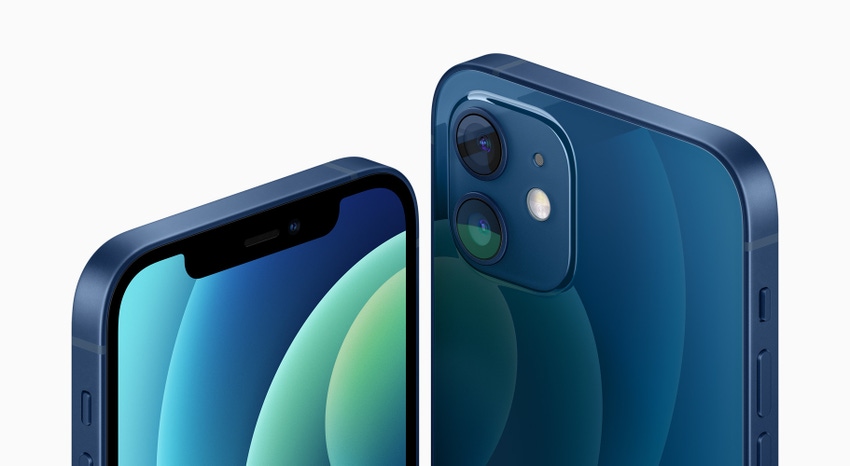The iPhone 12: rekindling smartphone sales and sparking a super cycle
The launch of the iPhone 12 in October last year saw Apple announce its first flagship 5G enabled device.
February 8, 2021

Telecoms.com periodically invites expert third parties to share their views on the industry’s most pressing issues. In this piece Alan Bentley, Head of Global Strategy at Blancco, looks at the potential knock-on effects of the latest iPhone launch.
The launch of the iPhone 12 in October last year saw Apple announce its first flagship 5G enabled device. It followed a challenging year for smartphone manufacturers with reports that sales declined by 20% in the first quarter of 2020 due to the impacts of the pandemic. While smartphone sales continued to decline throughout 2020, analyst firm IDC predicted that shipments would return to growth in the 2020 Christmas holiday period and beyond, driven by a strong push behind 5G.
Despite the iPhone 12 not being the first 5G device to hit stores, it quickly captured 16% of the global 5G smartphone market. The device also accounted for 76% of iPhone sales in the US for October and November of 2020. But it wasn’t just Apple loyalists clamouring to get their hands on the latest product that drove an uptick in phones shipped. Rather, there was a shift in the way operators marketed and incentivised iPhone 12 purchases, that has undoubtedly set a precedent for how phones might be sold as the 5G era takes off.
Incentives through aggressive trade-in offers
The iPhone 12 launch was unique not only because it boasted 5G capabilities, but because operators pursued aggressive trade-in and buyback strategies, offering significant discounts and money back for consumers willing to trade-in an older device. While trade-ins and buyback schemes are nothing new, some of these discounts were too good to refuse, in some cases as high as £620 off in the UK and $700 in the US. Following a challenging year of waning smartphone sales, the impetus behind the decision is clear, Apple and operators were keen to restimulate sales of new devices.
Equally, though, 2021 looks to be the year when 5G sees significant widescale adoption and operators will be keen to drive consumers towards purchases of newer 5G ready phones to start seeing a return on their investments in 5G infrastructure. The launch of the iPhone 12 represents an ideal opportunity for operators to go after the consumer, encouraging upgrades to 5G phones and beginning to lay the foundations for offering subscribers value added 5G propositions and services. In offering consumers a device at a more affordable price, subsidising part of the cost through money back, operators can further enhance subscriber retention.
A secondary device super cycle
This push by operators to incentivize upgrades and drive sales of 5G enabled phones looks set to create a trade-in deluge, flooding the secondary device market with increased supply. In fact, the secondary market is just as appealing to mobile operators, with IDC forecasting the secondary market to experience a compound annual growth rate of 11.2% from 2020-2024. The combination of a push around sales of new 5G phones, and greater secondary market demand for LTE and 4G devices, looks set to drive what some are calling a “super cycle”.
On the whole this is exciting news for all involved in the sale of new and used devices. OEMs will be emboldened to pursue more aggressive buyback strategies, confident in the knowledge that there is demand for 4G and LTE phones in the refurbished market. Secondary market sellers will benefit from increased supply of higher quality devices with a high residual value. Lastly, consumers will be offered greater choice, with the potential for a brand-new phone at an exceptionally funded price, unlocking previously unfound value on trade in.
The challenge and opportunity for operators and mobile device processors with regards to the secondary market, will be in efficiently handling the increased supply of this super cycle. Ultimately, there is huge opportunity for operators and device processors to drive increased revenue and profits, but they must ensure they have streamlined, well managed and automated processes in place with enough bandwidth to ramp up production in line with increased supply.
Automating this supply chain should be a principle consideration, but equally, the safeguarding of consumer data will be of paramount importance. Implementing clear security measures to erase the data on processed devices, thus ensuring compliance with global regulations, will be critical in generating consumer trust in the process. Failure to appropriately sanitise the devices that enter the secondary market, could lead to data leaks which can be hugely costly for any organisation involved in that data breach. Operators and device processors should be mindful of this, as relying on manual processes to handle a deluge of used devices creates significant risk.
The launch of the iPhone 12 was a catalyst for the smartphone market, creating an opportunity for operators to aggressively pursue sales of new devices. The secondary market looks set to benefit from this strategy and it remains to be seen whether we will see similar strategies employed for other flagship launches. Nonetheless, the next step for operators and the secondary market is to continue building consumer confidence in the process, making trade-ins as seamless as possible, through a rich customer journey coupled with clear messaging on safeguarding sensitive data.
 Alan Bentley is President, Global Strategy at Blancco. An industry veteran, he joined the company in October 2016, and has worked closely with Blancco’s many customers and partners to implement data erasure solutions to mitigate security risks and ensure regulatory compliance. This gives him a unique insight into the market and business requirements driving the needs of today’s businesses.
Alan Bentley is President, Global Strategy at Blancco. An industry veteran, he joined the company in October 2016, and has worked closely with Blancco’s many customers and partners to implement data erasure solutions to mitigate security risks and ensure regulatory compliance. This gives him a unique insight into the market and business requirements driving the needs of today’s businesses.
Read more about:
DiscussionAbout the Author(s)
You May Also Like








.png?width=300&auto=webp&quality=80&disable=upscale)


_1.jpg?width=300&auto=webp&quality=80&disable=upscale)


.png?width=800&auto=webp&quality=80&disable=upscale)